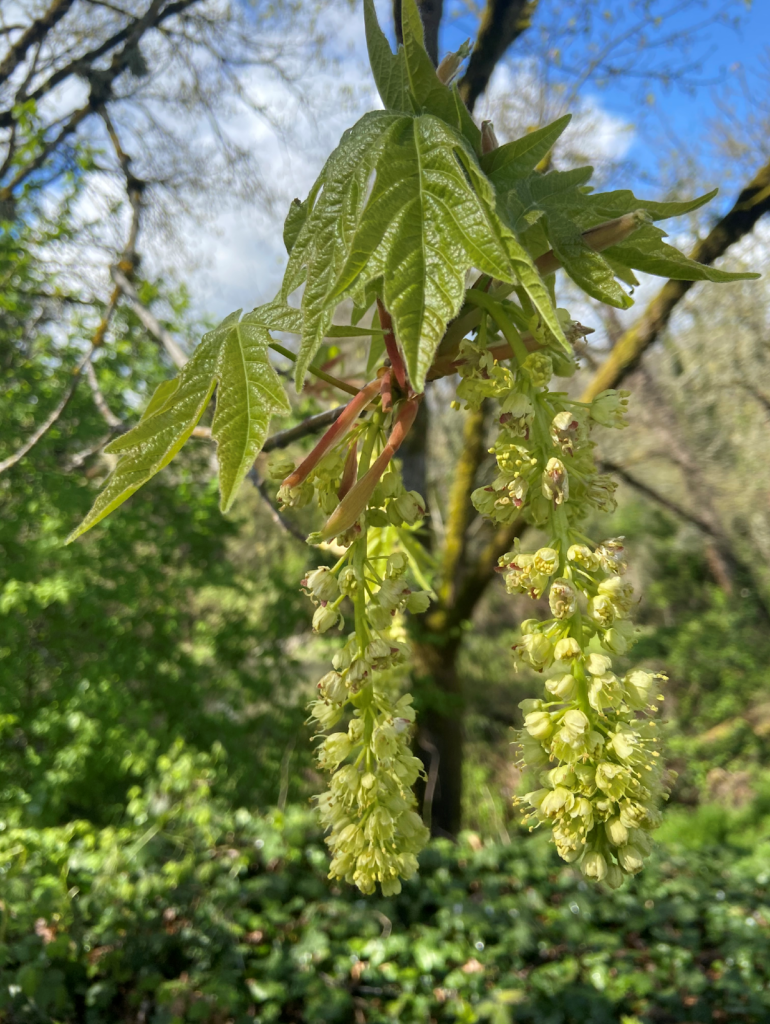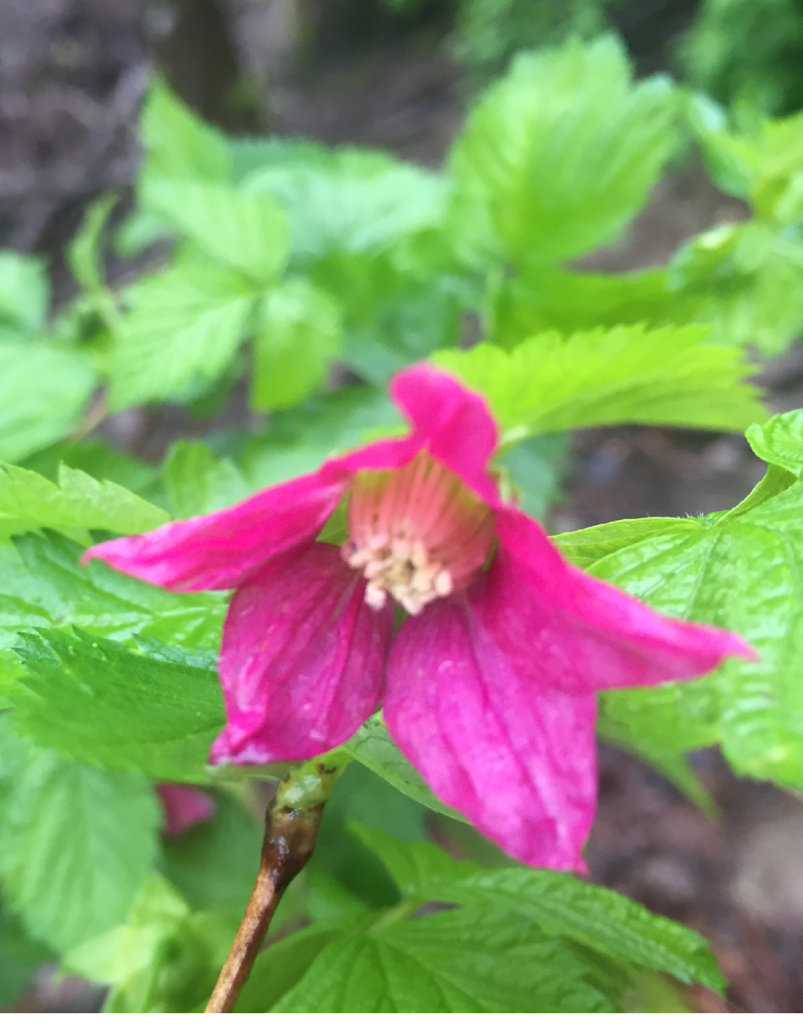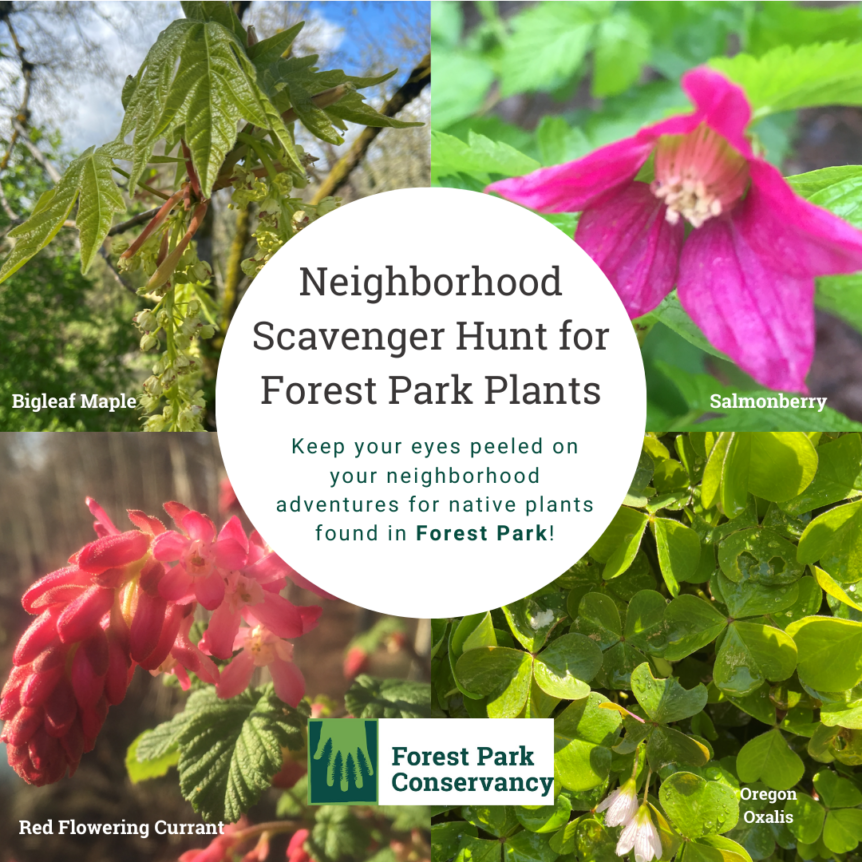As people around the world are on ‘Stay-at-Home’ orders the natural world is keeping to its own natural orders. It is spring in the Pacific Northwest. On your daily walks/runs/rides keep an eye out for these flowering native plants. Nature’s own scavenger hunt!
Have fun and tag us on Instagram or Facebook when you find a Forest Park favorite. Let’s share some plant ID knowledge with one other!

Common name: Bigleaf Maple
Scientific name: Acer macrophyllum
Description: large deciduous tree
Flower: Catkin
Leaves: typically, 15-30 cm across, with five deeply-incised palm-shaped

Common name: Osoberry
Scientific name: Oemleria cerasiformis
Description: Multi-stemmed large shrub to small tree, purplish-brown bark
Flower: White, drooping clumps in early spring
Fruit: Small hard stone fruit color ranging from yellow to peach maturing to black/blue. Technically edible, but bitter for people, however birds love them.

Common name: Salmonberry
Scientific name: Rubus spectabilis
Description: Prickly multi-stemmed shrub; golden-brown, shedding bark
Flower: Magenta, five petals in early spring to early summer
Fruit: Raspberry-like with a hollow core, ranging from yellow to orange-red. Mild in flavor.

Common name: Red Flowering Currant
Scientific name: Ribes sanguineum var. sanguineum
Description: Deciduous shrub; bark is dark brownish-grey with prominent paler brown lenticels
Flower: 10-20 pale pink to rose pink or deep red drooping flower clusters
Fruit: Dark purple to blue/black oval-shaped berries; edible but taste-less

Common name: Redwood sorrel /Oregon Oxalis/ Sourgrass
Scientific name: Oxalis oregana
Description: Perennial herbaceous ground cover
Flower: Small white to pink with five petals
Leaves: Three leaflets are heart-shaped; edible in small amounts due to high oxalic acid
Glossary
Catkin– cylindrical petal-less flower cluster arranged closely along a central stem which is often drooping, usually for wind-pollinated tree reproduction.
Deciduous– trees and shrubs that seasonally shed their leaves.
Herbaceous– plants that have no persistent woody stems above ground
Perennial– plant that lives more than two years
Lenticels– one of many raised pores in the stem of a woody plant that allows gas exchange.
Shrub– a small- to medium-sized perennial woody plant.

